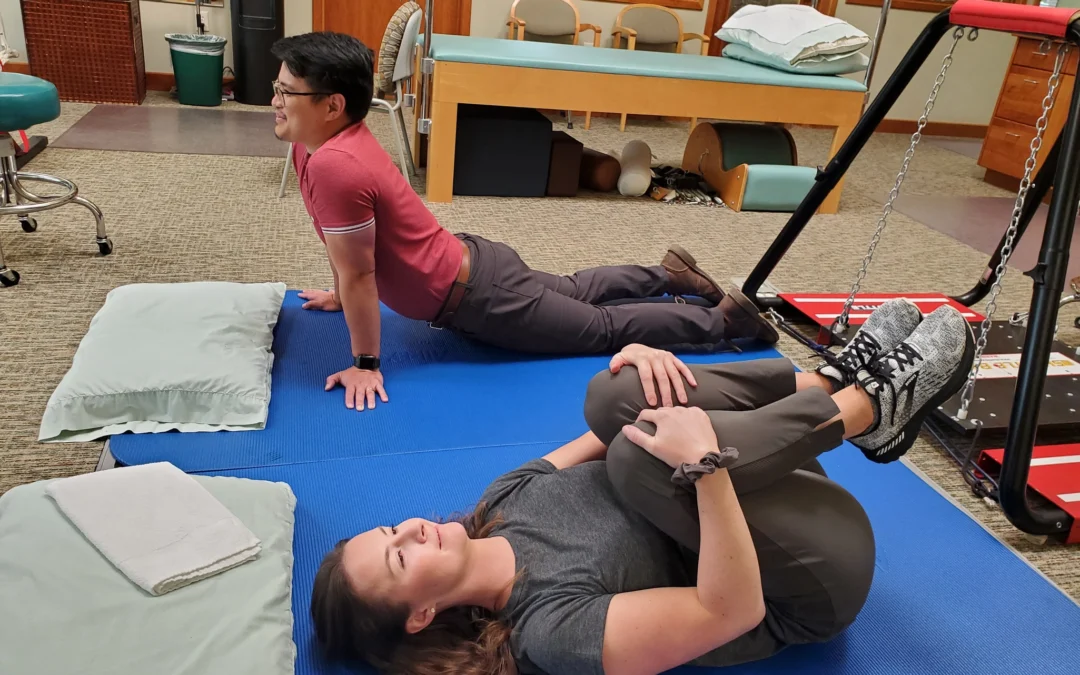The majority of us will experience back pain of one sort or another in our life times. Your pain may manifest itself as a simple strain that subsides in a week or so on its own, or maybe yours is that acute flareup once or twice a year with lightning bolts of pain shooting in your back and down your leg. You could be the one that as you’ve aged you get that low grade, chronic, degenerative back pain that won’t quite go away or let you stand up straight. Whichever was that you experience it, most of us know that back pain comes in many forms.
When we’re young our spine is amazingly flexible and strong. With age, injury, repetitive strain and good old mileage things start to change. All of a sudden it hurts to bend over, lift or sit too long. Maybe it hurts more when you stand too long or walk too far. Either way your back is trying to tell you something. What makes it better or what makes it worse? You can use this feedback to self treat your aching back both in good times and bad.
Generally speaking there are two basic structural forms in low back anatomy. First, the hyperlordotic or sway back spine with the deep forward curve that naturally likes to stand and walk. Secondly, there is the hypolordotic or flat back spine with little or no forward spinal curvature that naturally likes to bend forward and sit. Each structure prefers certain types of activities or movements and doesn’t like or gets worse with others.
A simple way to self diagnose your back pain to determine what is good and what is bad for it, is to assess what activities feel better and which feel worse. Even when your back pain is flared up there is always one direction of movement that feels better and one that feels worse. Does your back feel better if your bend forward or is it more comfortable to bend backwards? Basing your specific home exercise program on the direction of comfort will alleviate pain and restore movement in all directions.
If your back feels better when you bend backwards, stand and walk but feels worse when you sit or bend over, then try these exercises.
- 1. Prone on elbows
- 2. Prone pressups
- 3. Cats/dogs with extension bias
- 4. Sustained spinal extension
- 5. Hamstring/neurotension stretching
- 6. Extension in standing
- 7. Walking

If your back feels better while bending forward, sitting or lying down and gets worse with standing and walking, then try these exercises.
- 1. Single knee to chest
- 2. Double knee to chest
- 3. Pelvic rotation
- 4. Hamstring/neurotension stretching
- 5. Cats/dogs with flexion bias
- 6. Prayer stretch
- 7. Static back

All of these recommended exercises should be easy and pain free. If any exercise is painful please discontinue. As always with any new exercise or activity program consult with your physician or medical provider to get clearance that these activities are appropriate for your current health status.
Of course, there is no substitute for helping your aching back like good old hands on treatment like you’ll receive from the therapists at M.C.O.P.T. We will identify and locate painful pressure points in your back and pelvis that are diagnostic sensors indicating the true source of your pain. We will treat these painful pressure points to eliminate pain and muscle spasm restoring pain free movement and function in all directions. Treating the source of your problem rather than chasing your pain will result in long lasting positive outcomes. Professional treatment in combination with a spine specific home exercise program will give you the biggest bang for your buck in keeping your back happy and healthy.
You can “Get Better and Stay Better”.

